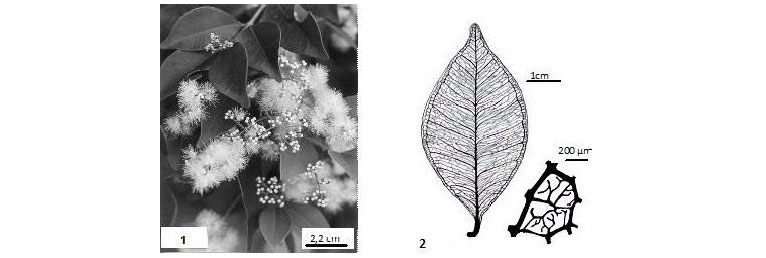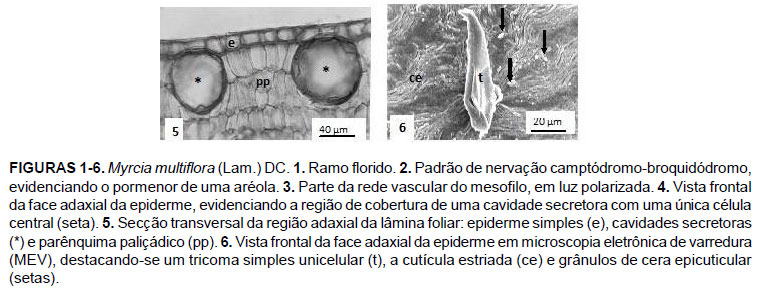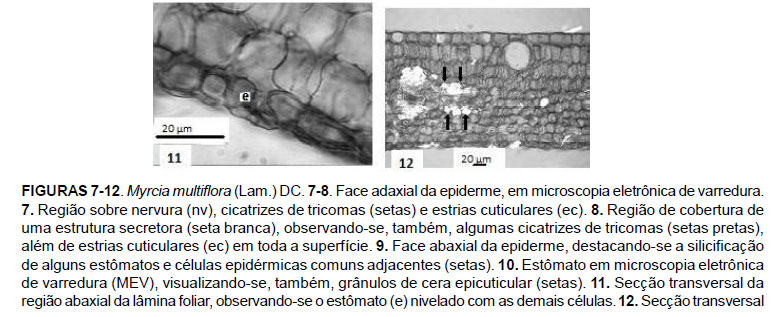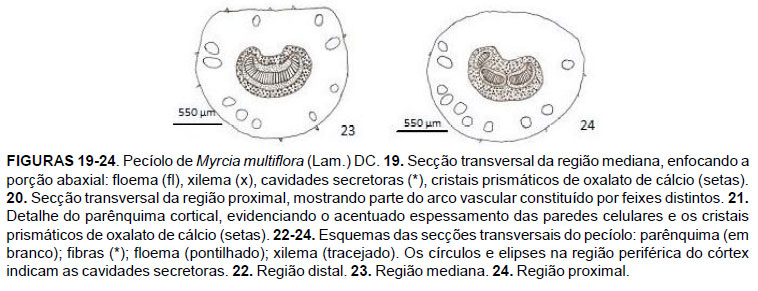Myrcia multiflora (Lam.) DC. leaves have been used in folk medicine as hypoglycemic. The aim of this work is to describe morphoanatomically the leaves of this plant in order to use the obtained data as reference in quality control tests of drug samples, investigating their authenticity. Whole leaves were diaphanized and stained for venation study. Petiole transverse sections and leaf blade transverse and paradermal sections were analyzed under an optical microscope (OM). Leaf surface was also observed by scanning electron microscopy (SEM). Histochemical tests were done using fresh material to identify and locate carbohydrates, starch, tannins, lignin, crystals and silica. Morphologically, the leaf is simple, oval-elliptical, with entire margin, acute base, acuminate apex and chartaceous texture. The venation pattern is camptodromous-brochidodromous. Anatomically, the leaf is hipostomatic, with compact and dorsiventral mesophyll, containing three layers of palisade parenchyma. The epidermis is uniseriate, silicified in some regions and presents cells with straight anticlinal walls. In the subepidermal position, there are several essential oil secretory cavities. Vascular bundles are collateral and surrounded by crystalliferous series. The obtained data were compared to those of other Myrtaceae species , leading to the conclusion that, the morphoanatomical traits of M. multiflora contribute to its diagnosis.
leaf anatomy; leaf morphology; Myrcia multiflora; Myrtaceae; medicinal plants












